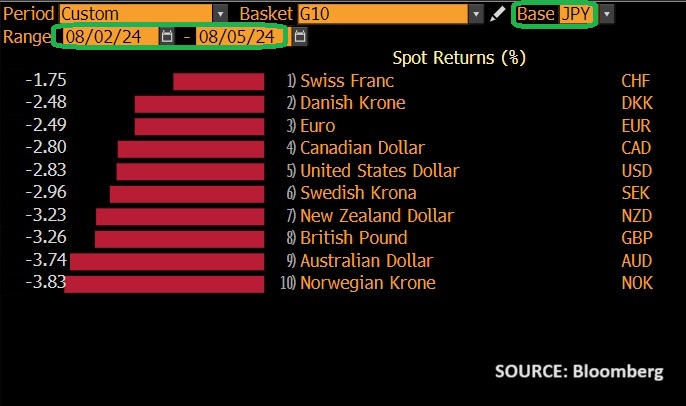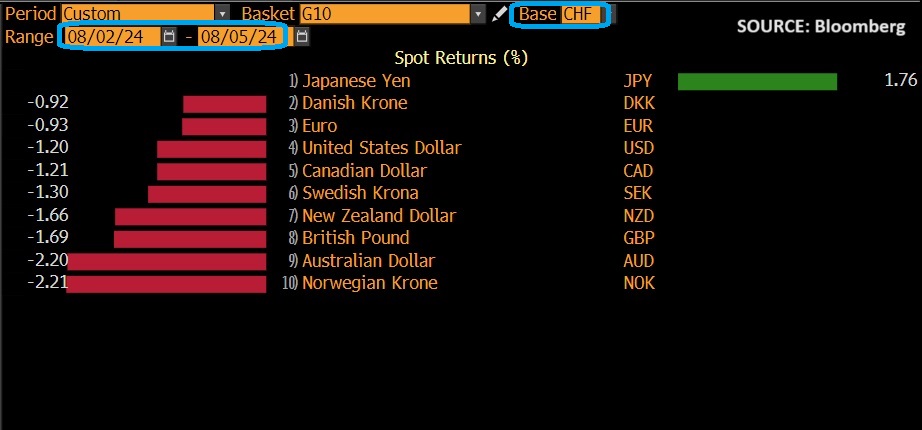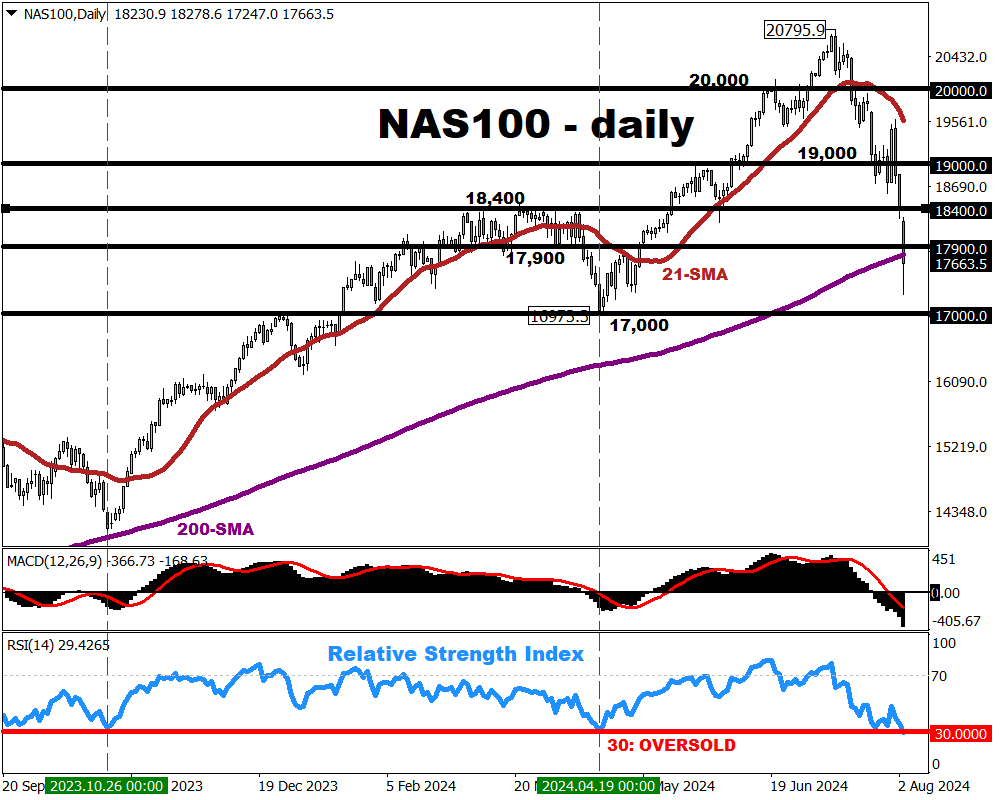-
Risk assets (global stocks, cryptos, etc.) plummeting
-
Higher US unemployment rate fuelling US recession fears
-
Markets fear Fed may be too late to fend off recession
-
Safe havens JPY, CHF rising against all G10 peers
- Volatile markets present trading opportunities galore, including for NAS100 index
Markets are a sea of red today!
Various asset classes, from stocks to cryptos, are plummeting after the recent US jobs shocker.
Last Friday (August 2nd), we learned that the US unemployment rate for July 2024 rose to 4.3%, its highest since October 2021 (back when the US economy was still recovering from the Covid pandemic).
That 4.3% unemployment rate has now officially triggered the “Sahm rule” – a historically accurate predictor of US recessions.
What is the “Sahm rule”?
This “rule” stipulates that a US recession begins when the 3-month moving average of the US unemployment rate rises by half (0.5) a percentage point, compared to its 12-month low.
Although the architect of this rule, former Federal Reserve economist Claudia Sahm, has sought to downplay the significance of such backward-looking data, markets were in no mood to hang around to give the benefit of the doubt to the world’s largest economy.
Can the Fed prevent a recession?
It's still possible, but such odds appear less likely in light of the sudden jump in the US unemployment rate.
The Fed may yet shore up support for the economy by triggering larger-than-usual rate CUTS.
Still, markets fear that the Fed rate cuts may arrive too late.
After all, Fed rate cuts need six months or more before they are truly felt in the real economy.
Prior to last Friday’s US nonfarm payrolls data release, markets had forecasted just a 31% chance that the Fed will cut interest rates by 50-basis points at its September FOMC meeting.
Remember that the norm is a 25-basis point adjustment per meeting. A 50-bps cut would be double the typical rate move.
At the time of writing, markets have fully priced in a 50-basis point cut in September.
How are markets reacting?
Markets are extending the selloff across “risk assets” following Friday’s US jobs report.
So far today (Monday, August 5th):
-
US500 = down 2.9%
-
NAS100 = down 4.7%
-
Bitcoin = down 11.7%
- Ethereum = down 16.4%
On the flip side, “safe havens” are climbing.
NOTE: Safe havens are assets that help protect investors’ wealth during times of heightened fear and uncertainty, as we’re seeing right now.
Typical safe havens are the Japanese Yen (USDJPY falling 3.1%) as well as the Swiss Franc (USDCHF falling 1.2%).
No surprise that both these safe haven currencies are stronger against all of their G10 peers today.


Back to "risk assets" ...
How long will the selloff last?
Unfortunately, there’s no definite answer.
Even as "fear begets fear", there are signs that point to prices reacting either way: a rebound, or further declines.
-
Potential rebound?
Focusing on the NAS100 index, traders may draw clues from these technical events:
-
14-day relative strength index (RSI): the past 2 instances when this indicator reached the 30 level (which is the textbook threshold for “oversold” conditions), the NAS100 went on to stage a stunning rebound.
- 200-day simple moving average (SMA): the past 2 instances when prices reach this technical indicator, in March and October 2023, prices then duly soared.
If recent history is to be the guide, and such technical signals prove true once more, that should set the stage for a recovery for the NAS100 stock index, and potentially broader US stock markets as well.
-
Further declines?
However, the fundamental picture is different this time around, compared to the last time we saw the above-listed technical events.
As mentioned earlier, the US unemployment rate at 4.3% is at its highest since 2021.
The risks of a US recession loom larger, compared to during the 2023 selloff across US stock markets.
If the US economic outlook turns darker, and markets believe that the Fed is unable to fend off a recession, that could heap more downward pressure on the NAS100.
If so, the NAS100 index could be dragged down to the psychological 17,000 mark over the near term.
